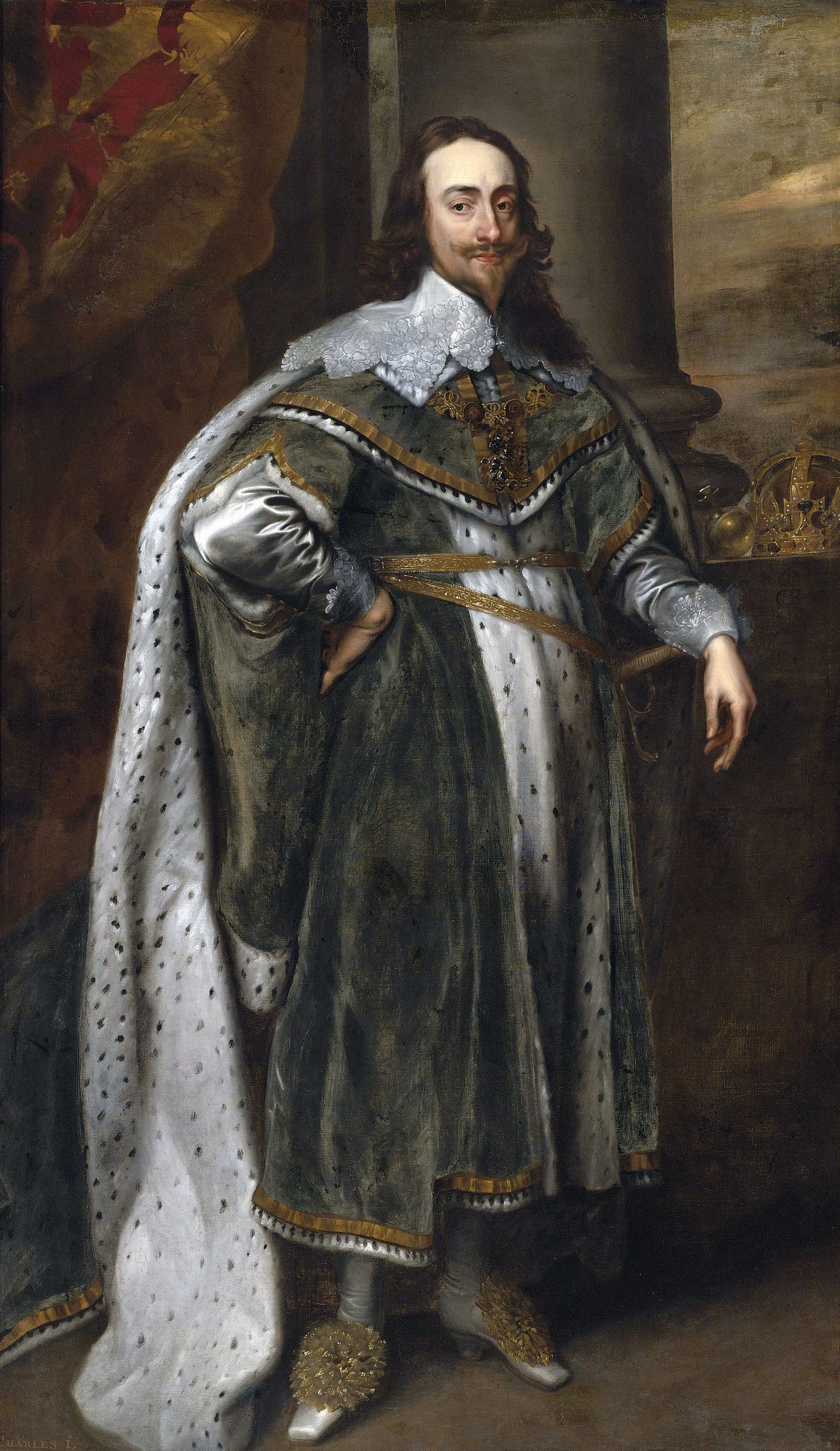How England Almost Became Catholic Again
King Charles I was an excellent King, who was unjustly murdered by a revolutionary rabble of unjust men. He knew well the dignity of the office conferred upon him by God, and carried himself accordingly.
He also married a Catholic. And with that marriage came the United Kingdom’s last major chance of having a Catholic monarch. Let me explain.
King Charles I. As mentioned above, His Majesty King Charles I married Princess Henrietta Maria of France, who was a Roman Catholic. The marriage was only able to take place after Pope Urban VIII granted a dispensation, since King Charles I was a non-Catholic. As Queen consort, Princess Henrietta Maria maintained a strict regimen of prayer and fasting. She had clergy to provide for her spiritual needs, and made a pilgrimage to the site of Bl. Edmund Campion's martyrdom. She convinced her husband to free Catholic prisoners on special occasions, and helped to procure the establishment of Maryland as a Catholic enclave in North America.
There were difficulties, however. Her faith meant that she refused to attend her husband's coronation, since it was an Anglican ceremony, and her popularity was strained owing to her limited ability to partake in public life. She did not convert her husband, but she did convert many of her courtiers, and provided much needed spiritual and political support to the Catholics of England.
King Charles II. After the Restoration in 1660, King Charles II was crowned king. He was favourable to the Catholic Church. He attempted, in 1672, to grant religious liberty to both Roman Catholics and noncomformist Protestants. It should be noted here that religious liberty for non-Catholics was condemned by the Church, but the toleration of false religions can be permitted for a greater good. In this scenario, it would, in my view, certainly be a greater good to end the persecution of the Church. However, Parliament pressured the King to withdraw the Declaration of Indulgence, and he did.
King Charles II married Catherine of Braganza, who was a Roman Catholic from Portugal — like his father, he had married a Roman Catholic. In 1665, she had built a friary occupied by thirteen Portuguese Franciscans, which was completed two years later. She returned to Portugal in 1692 (King Charles II died in 1685), and died in Lisbon.
On the last evening of his life, King Charles II was received into the Roman Catholic Church, and died a son of Holy Mother Church.
King James II. King Charles II was succeeded by his brother, James. King James was initially married to an Anglican, and produced two Protestant children, including Queen Mary. Note this well, for this will come up later.
King James II converted to Catholicism in the late 1660s, after spending time in France. His conversion was secret for a time, but eventually became public, and he stopped assisting at Anglican services in 1676. After the death of his first wife, he married Mary of Modena, a devout Catholic from Italy. Like his brother and his brother's father, he had married a Roman Catholic, but he was the first Catholic King that England enjoyed in over 100 years, save the last few seconds of his brother’s life.
King James once exclaimed: ‘If occasion were, I hope God would give me his grace to suffer death for the true Catholic religion as well as banishment’. Such a grace was to be granted to him.
In 1688, King James issued a new Declaration of Indulgence, granting religious freedom to Catholics. The Anglican Archbishop of Canterbury and six other bishops were arrested for protesting the Declaration of Indulgence, but what alarmed the populace the most was the birth of his son, James Francis Edward Stuart. This James was a Roman Catholic and a legitimate heir: in other words, his birth meant, or would have meant, the end of an Anglican Monarchy. A group of seven Protestant nobles invited William, Prince of Orange, to come to England with an army. King James later fled to France. Although refusing to depose him, Parliament declared that the King had affectively abdicated the throne, and his daughter, Mary, was declared Queen; she was to rule jointly with her husband, William of Orange.
The aftermath. After a few failed attempts to retake the throne, King James II died in exile in France. The Anglican rot had penetrated too deep into England and its political system to support a Catholic King; gone were the days of cuius regio, eius religio — England was Protestant for good, and in 1689 a ‘Bill of Rights’ was passed, which excluded Catholics from the throne. This law is still in place to this day. Had King James II stayed on the throne, and his son succeeded him, it is possible that, with royal support, the Catholic Religion may have once again flourished in England, but it was not to be so.
May the Blessed Virgin Mary, Mother of God and Our Most Gentle Queen and Mother, grant through her prayers that the United Kingdom may once again enjoy a Catholic Monarch. Ave Maria.




